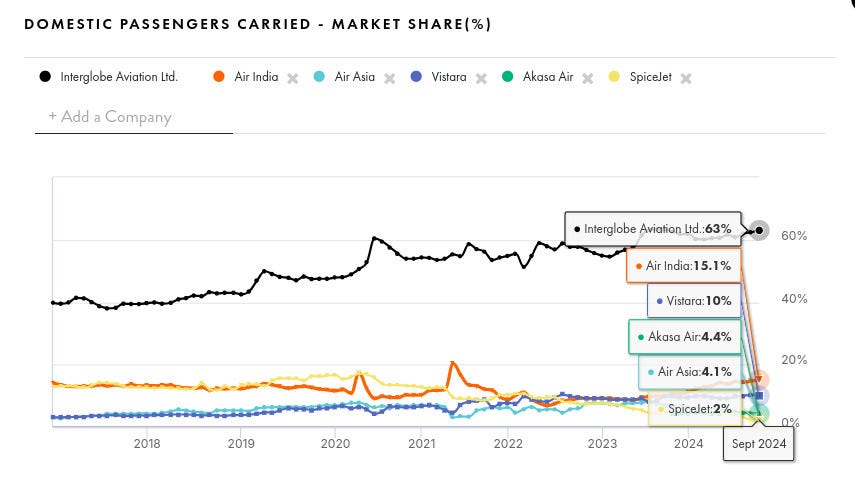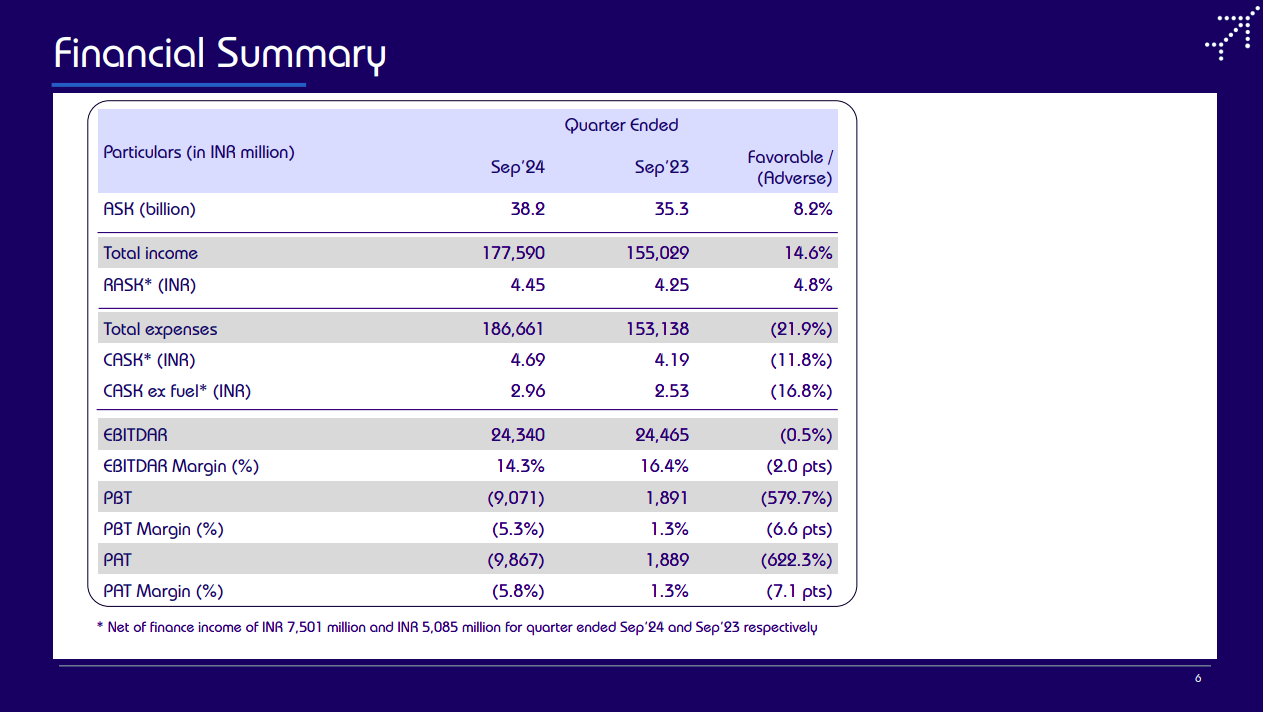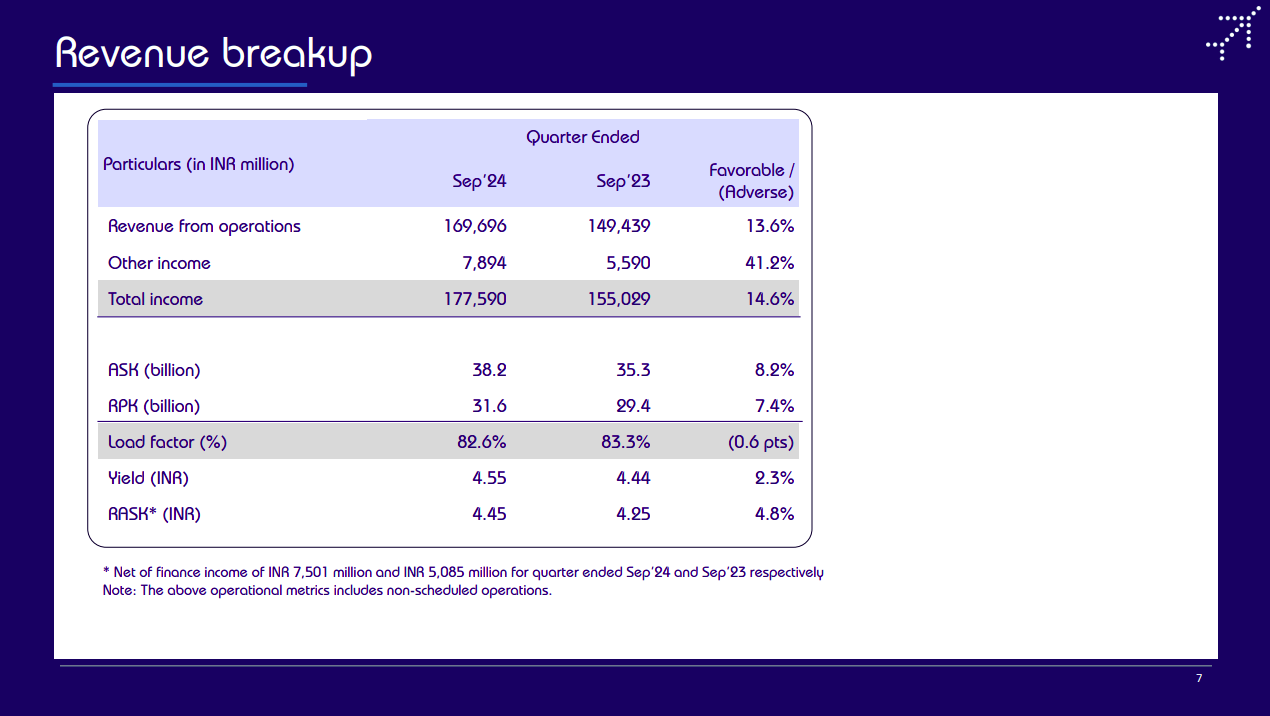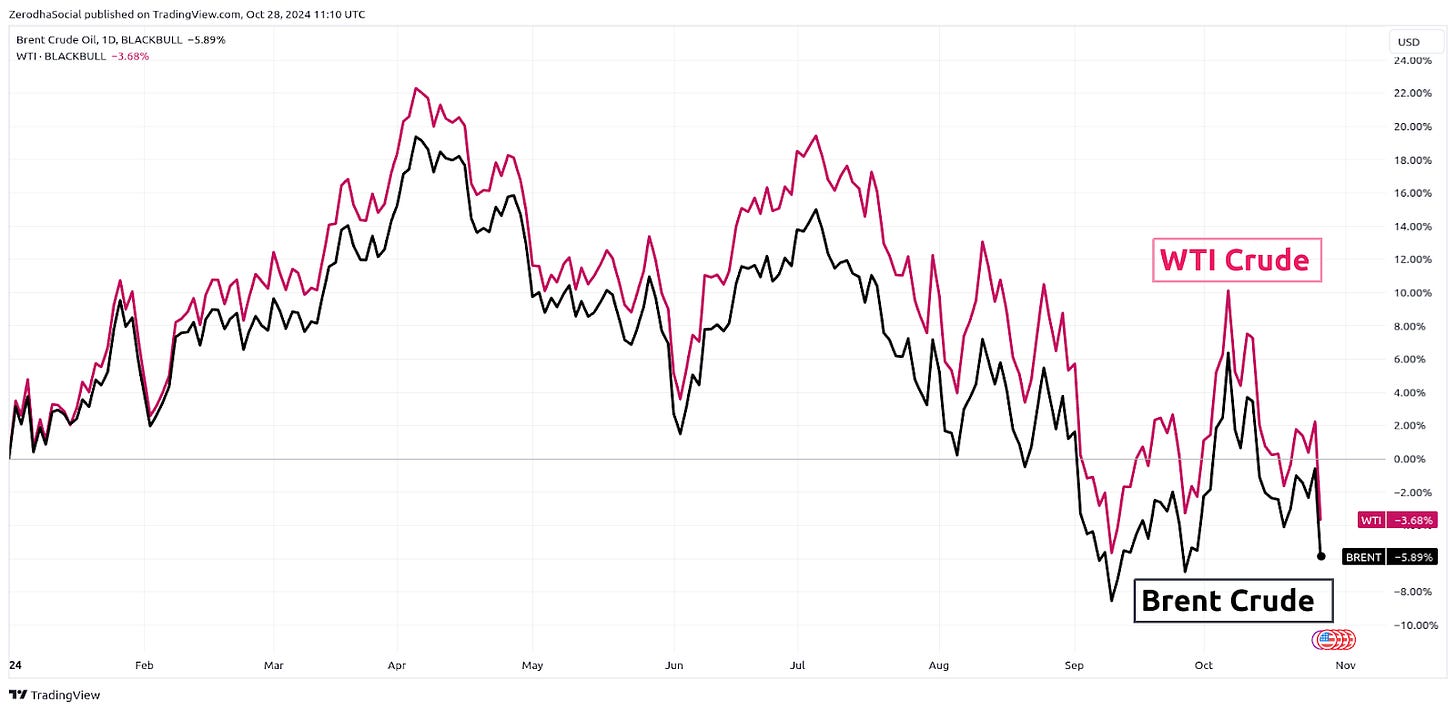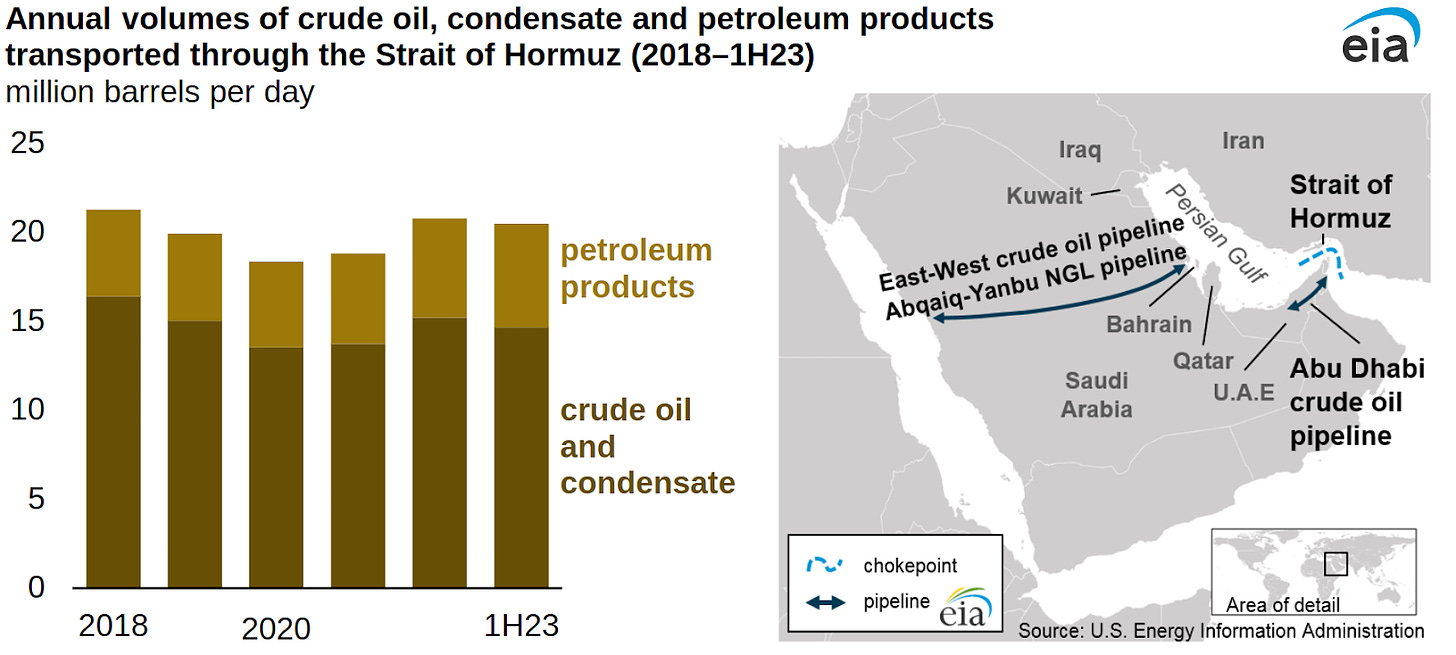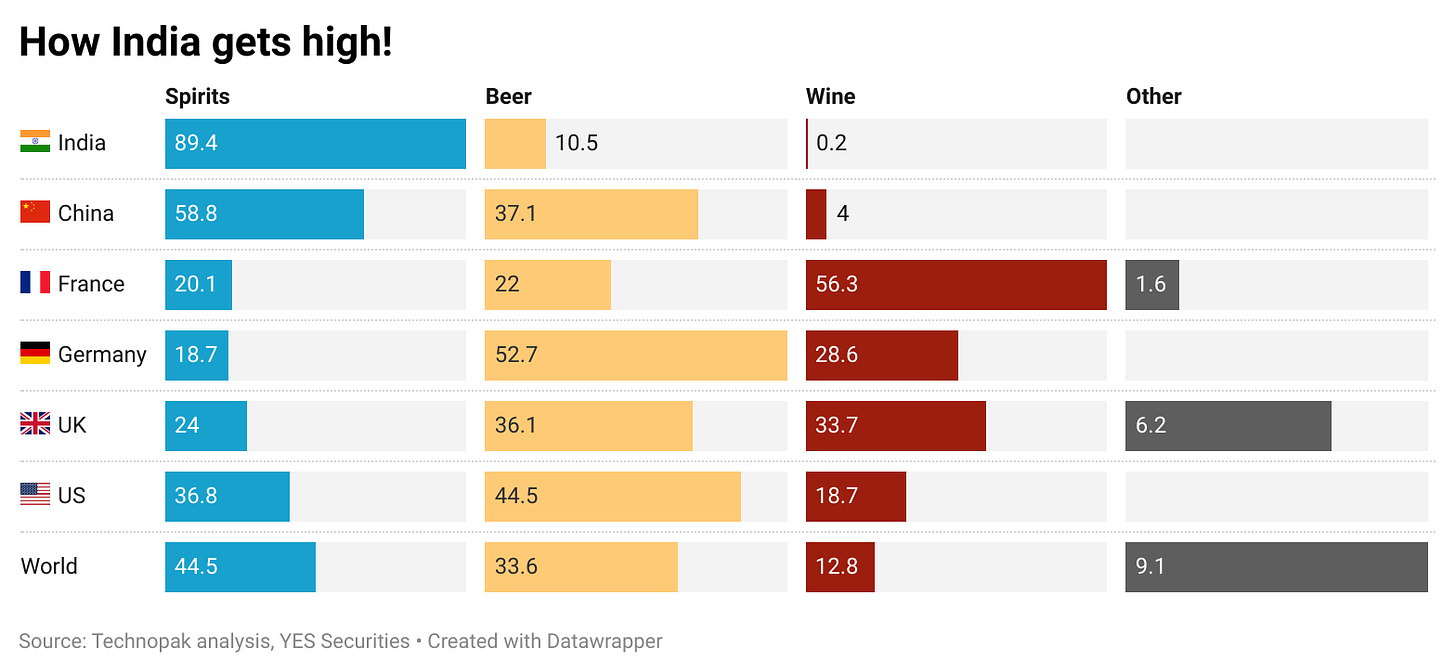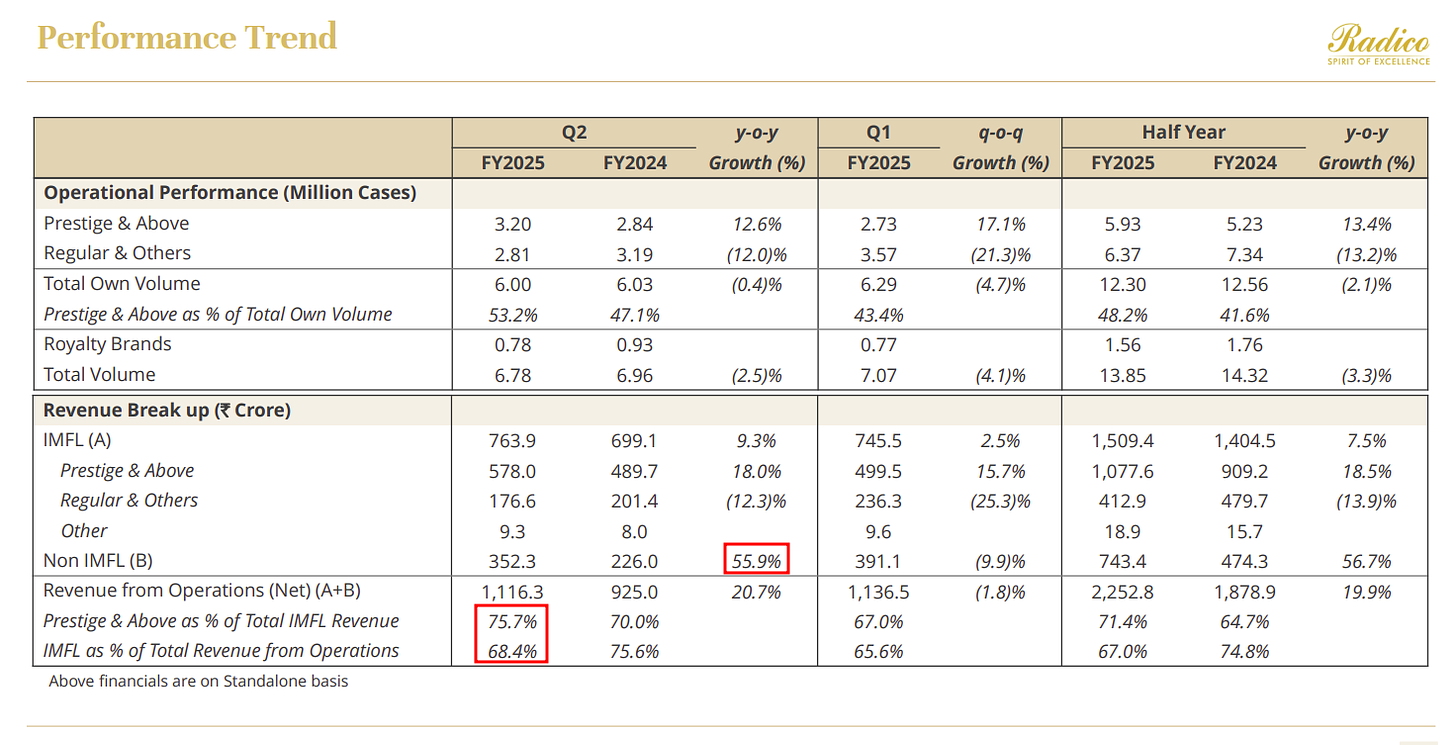Our goal with The Daily Brief is to simplify the biggest stories in the Indian markets and help you understand what they mean. We won’t just tell you what happened, but why and how too. We do this show in both formats: video and audio. This piece curates the stories that we talk about.
You can listen to the podcast on Spotify, Apple Podcasts, or wherever you get your podcasts and videos on YouTube. You can also watch The Daily Brief in Hindi.
Check out our new show where we explain the latest trends in markets and economy in charts. Watch it here or read the newsletter.
Today on The Daily Brief:
- Why did IndiGo post a ₹990 crore loss despite strong revenue growth?
- Why did Oil prices drop after Israel struck Iran?
- What is happening in the alcohol industry?
Why did IndiGo post a ₹990 crore loss despite strong revenue growth?
The Indian aviation market is buzzing with excitement right now, driven largely by an expanding middle class and the rising demand for premium services like air travel. At the heart of this growth is IndiGo Airlines, India’s largest airline, holding over 60% of the market share.
Source: Tijori Finance
Because of IndiGo’s size, its performance gives us a good snapshot of the overall health of India’s aviation industry. IndiGo recently released its quarterly results, and they’re a mixed bag, with both encouraging numbers and some challenges that are weighing down profits. Today, let’s break it down to see exactly what’s going on.
For the quarter, IndiGo reported total revenue of ₹17,800 crore—a 14.6% increase compared to the same period last year. This growth came from strong demand and the airline’s efforts to expand capacity, meaning it added more flights and opened new routes, allowing more passengers to fly. IndiGo’s capacity grew by 8%, increasing the number of available seats across all its flights.
One important measure here is the Passenger Load Factor (PLF), which shows how full the flights are, on average. IndiGo’s PLF was 82.6%, indicating that most flights were nearly full. Another key metric is yield, which tells us how much revenue the airline makes per passenger per kilometer. IndiGo’s yield reached ₹4.55, beating estimates and rising 2% from the previous year.
These numbers point to a strong core performance, but despite that, IndiGo reported a net loss of ₹990 crore—a significant shift from the ₹190 crore profit in the same period last year.
So, what exactly went wrong?
IndiGo is currently facing several challenges that are cutting into its profitability. Let’s break down each issue to understand how it’s affecting the airline’s bottom line.
1. Aircraft Grounding and Supply Chain Bottlenecks
One of the major issues IndiGo faced this quarter was a significant number of grounded planes—over 60 aircraft. This is a big problem because grounded planes don’t generate revenue; they still need maintenance and regular checks, but they aren’t flying passengers who pay for tickets.
Most of these grounded planes are from IndiGo’s Airbus A320neo fleet, known for its fuel efficiency and suitability for short to medium-haul flights. However, these planes use engines from Pratt & Whitney, a manufacturer whose engines have recently shown faster-than-expected wear and tear. This means the engines require more frequent maintenance, leading to more frequent and longer groundings.
This issue isn’t unique to IndiGo; globally, Pratt & Whitney and other engine suppliers are struggling to meet the demand for parts, causing a backlog in repairs and maintenance.
To keep its operations running smoothly, IndiGo had to lease additional planes on short-term contracts. These leases, known as ACMI (covering Aircraft, Crew, Maintenance, and Insurance), involve “ready-to-fly” planes but come at a premium cost. While these leased planes helped fill the gap, they added to IndiGo’s operating expenses.
IndiGo’s CEO, Pieter Elbers, mentioned that efforts are underway to reduce the number of grounded planes, with the goal of bringing this number down to the mid-40s by FY26. Until then, the costs of keeping grounded planes and paying for temporary leases will weigh on their finances.
2. Rising Jet Fuel Costs
Jet fuel is one of the largest expenses for any airline, and IndiGo has been heavily impacted by rising costs this quarter. Fuel expenses increased by 12.8% compared to last year, adding more pressure on the airline’s budget.
There are a couple of reasons for this increase. First, global oil prices have been volatile, influenced by geopolitical tensions and production cuts by oil-producing countries. Additionally, some Indian states recently increased VAT (Value Added Tax) on Aviation Turbine Fuel, making it even more costly for airlines like IndiGo to operate flights within these regions.
This rise in fuel costs is reflected in a metric called CASK (Cost per Available Seat Kilometer), which indicates the cost of operating one seat over one kilometer. IndiGo’s CASK rose from ₹4.19 last year to ₹4.69 this quarter, driven by fuel expenses, additional leasing costs, and general inflation in operating expenses.
Source: Indigo
3. Inflation in Other Operating Costs
It’s not just fuel—other operating costs are also rising. IndiGo’s non-fuel CASK, which includes expenses like airport fees, maintenance, crew costs, and ground services, went up by about 17% year-over-year. A major factor here is the ongoing expansion at airports across India, especially at major hubs like Delhi and Mumbai, which has led to higher fees for airlines and increased operating costs.
Additionally, congestion at these busy airports has forced IndiGo to extend “block times,” which is the scheduled time for each flight, including boarding, taxiing, flying, and landing. Longer block times mean more time on the ground and in the air, leading to less efficient fuel use and added expenses.
Inflation is also affecting crew-related expenses, including wages, hotel stays for overnight flights, and ground handling charges. During their earnings call, IndiGo’s management highlighted that inflationary pressures have impacted multiple cost areas, from employee wages to ground handling fees.
4. Competitive Pressures and Yield Constraints
While IndiGo faces these rising costs, it’s also navigating a highly competitive market. New players like Akasa Air and the revitalized Air India are expanding aggressively, making it difficult for IndiGo to raise fares without risking passenger loss. Competition in the international segment is especially intense, which puts downward pressure on ticket prices.
IndiGo’s RASK (Revenue per Available Seat Kilometer), which shows how effectively the airline generates revenue, grew by 5% year-over-year to ₹4.45 this quarter. However, with competition heating up, IndiGo has limited room to increase fares. To retain passengers, they need to keep ticket prices competitive even as costs continue to rise.
Source: Indigo
Despite these challenges, IndiGo is pushing forward with initiatives to increase revenue and expand its market presence.
One major step is IndiGo’s entry into the business-class segment on key routes, such as Delhi-Mumbai. By offering a premium service, IndiGo aims to attract high-value travelers who are less sensitive to fare changes. This shift is part of a broader strategy to diversify its customer base beyond price-sensitive flyers.
Another initiative is the launch of BluChip, a loyalty program to encourage repeat business and strengthen customer relationships. Loyalty programs help airlines build stronger connections with their customers, giving them more reasons to return.
IndiGo is also accelerating its international expansion, adding new routes to destinations like Malaysia and Sri Lanka, with a target of having international flights make up 30% of its total capacity by year-end. This international push is crucial as IndiGo faces intense domestic competition and looks for new revenue sources outside India.
In a forward-thinking move, IndiGo recently launched IndiGo Ventures, a venture capital arm with a ₹30 crore investment fund to support startups focused on aviation innovation. This could bring new technologies to IndiGo while positioning the airline as a forward-looking industry leader.
IndiGo’s challenges won’t disappear overnight, but the airline is optimistic. It plans to significantly reduce the number of grounded planes by FY26, which should help lower costs associated with temporary leases. There’s also hope that global oil prices will stabilize, easing the pressure of rising fuel costs.
IndiGo’s story this quarter highlights the complexity of running a major airline in a fast-growing yet competitive market. With rising costs and the need to stay competitive, IndiGo is taking steps to adapt, grow, and stay ahead. It’s a balancing act, and time will tell if these strategies will turn these headwinds into tailwinds for future profitability.
Why did Oil prices drop after Israel struck Iran?
Let’s dive into what happened over the weekend between Israel and Iran because it’s causing quite a stir in the oil markets. For those of us in India, this matters a lot since we import nearly 90% of our oil.
Here’s a quick rundown of this escalating back-and-forth between Israel and Iran, which has been heating up all year. It started back in April when Israel struck the Iranian consulate in Damascus, killing 13 people, including a top Iranian commander. Iran responded with its first direct attack on Israel, launching around 300 missiles and drones.
Things intensified even more in July when a Hamas leader was killed in Tehran. In late September, Israel assassinated Hezbollah leader Hassan Nasrallah and an Iranian general in Beirut. Iran retaliated on October 1st by launching about 180 ballistic missiles at Israel. This past weekend, Israel struck back again. Early Saturday morning, Israeli jets hit several targets across Iran, including military sites in Tehran, Ilam, and Khuzestan provinces. While four Iranian soldiers were killed, what’s interesting is that Israel deliberately avoided Iran’s oil facilities and nuclear sites.
This is where it gets fascinating from a global perspective. Reports suggest the Biden administration coordinated closely with Israel to ensure a “targeted and proportional” response. The goal wasn’t just to prevent escalation but to protect the global economy. The White House specifically advised Israel not to target Iran’s oil infrastructure or nuclear sites, knowing the impact this could have on world markets.
This measured approach explains why oil prices dropped by about 6% when markets opened today. Brent crude fell below $72 a barrel, and WTI is now around $67. Markets had expected a more intense strike that could have disrupted Iran’s oil supply. When that didn’t happen, traders started unwinding the “war premium” that had been driving up oil prices.
Here’s why we can’t relax just yet. The biggest risk isn’t only about Iran’s oil production—it’s about the Strait of Hormuz. This narrow waterway between Iran and Oman is the world’s most crucial oil chokepoint. In 2022, around 21 million barrels of oil passed through it daily, which amounts to roughly 21% of global oil consumption. If this conflict escalates into a full-scale war, Iran could try to block the strait.
Source: EIA
To put it in perspective, about 82% of the crude oil passing through Hormuz heads to Asian markets. The main destinations are China, India, Japan, and South Korea, which together account for 67% of this flow. So, if anything happens to the strait, Asia would be hit first and hardest.
While Saudi Arabia and the UAE do have pipelines that bypass Hormuz, they can only handle about 3.5 million barrels per day—not nearly enough to replace the current flow. And while Iran has downplayed the weekend’s attacks, its foreign minister mentioned that any response would be “proportionate and calculated.” In diplomatic terms, that usually means ‘we’re not done yet.’
Here’s an interesting point: the markets seem to think this might be the end of direct strikes between Israel and Iran. But from our experience tracking oil markets, it’s exactly when things seem calm that we should stay most alert. And with a U.S. election year approaching, that adds another layer of uncertainty to the Middle East dynamics.
If you’re watching oil prices, keep an eye on two key factors: any signs of Iranian retaliation and, more importantly, any potential threats to the Strait of Hormuz.
What is happening in the alcohol industry?
India’s spirits market is unique. While alcohol consumption worldwide is often spread across beer, wine, and spirits, Indian consumers overwhelmingly prefer spirits—especially whisky, rum, and brandy. Spirits account for nearly 90% of all alcohol consumed in India, with beer a distant second and wine barely making a mark.
This creates a huge market for companies like United Spirits Limited (USL), part of the global beverage giant Diageo, and Radico Khaitan, one of India’s top homegrown brands. When these companies release their quarterly results, they provide more than just company updates; they offer a close-up view of the trends in India’s spirits industry.
USL’s shift toward “premiumization,” for example, isn’t just a business strategy—it reflects a broader shift in India’s drinking culture. Similarly, Radico Khaitan’s focus on luxury and semi-luxury brands shows that the demand for high-quality spirits is spreading beyond just a small elite and reaching a wider audience. By examining USL and Radico Khaitan’s latest quarterly results, we get insights into where India’s spirits market is headed and the factors shaping this evolution.
Before we dive in, let’s quickly cover two key terms in the alcohol industry: Prestige and Above & Popular. In the Indian spirits market, the Popular segment focuses on affordable, high-volume brands, while Prestige and Above caters to premium, higher-margin brands for consumers willing to pay for quality. The P&A segment reflects the growing trend toward premiumization, which has become a key focus for companies like USL and Radico Khaitan.
United Spirits had a challenging Q2 FY25. The company’s Net Sales Value (NSV) dipped slightly by 0.8% from the previous quarter, settling at ₹2,844 crore. Performance in its main Prestige & Above (P&A) segment, which makes up 88.9% of NSV, remained flat, with no growth from Q1 FY25. The Popular segment, contributing the remaining 11.1%, also showed minimal change.
Despite United Spirits’ focus on premiumization, this quarter showed that even high-end brands couldn’t drive growth, highlighting the pressures the company faces in a challenging consumer market.
So, why was there no growth?
During the earnings call, management attributed this to weaker consumer demand impacting premium sales, noting that growth has been slower than expected across all segments, especially for premium brands. However, CEO Hina Nagarajan pointed out a major positive development: the resumption of operations in Andhra Pradesh after five years. Andhra Pradesh was a substantial market before regulatory issues led to an exit, so this return is expected to give a welcome boost. Nagarajan remains optimistic about the upcoming festive season and sees USL’s premium portfolio as a key driver for future growth.
Now, let’s look at Radico.
Radico Khaitan generates 31.6% of its revenue from selling bulk alcohol to other manufacturers (B2B business), which grew 55.9% year-over-year, thanks to full production capacity at their new Sitapur plant. The remaining 68.4% of revenue comes from its branded liquor business (IMFL), where the company has strategically focused on premium brands. This focus is clear in their IMFL sales mix—premium brands (Prestige & Above) account for 75.7%, while popular brands make up 24.3%, reflecting the success of their premiumization strategy.
Source: Radico
Radico’s PAT stood at ₹82.2 crore, bolstered by the strong performance of its high-end brands, including the Rampur Indian Single Malt and the recent Rampur Jugalbandi series. The company’s strategy also involves international expansion, with plans to introduce its Indian single malts in markets like the US and UK. These moves aim to capture the growing global demand for premium Indian-origin spirits, positioning Radico Khaitan as a key player in both domestic and international luxury markets.
The results from both USL and Radico Khaitan highlight a broader industry trend: growth is now driven almost entirely by the Prestige & Above segment. While the Popular segment still plays a role in overall volume, it’s no longer the main contributor to revenue growth. Instead, premium products are where companies are finding their financial gains. As younger, urban consumers increasingly value quality, both companies have prioritized this segment to meet changing tastes.
So, the question remains: can India’s spirits giants continue to grow by focusing on premium offerings, or will they need to revive their mass appeal?
Tidbits
- Wa’ed Ventures, Aramco’s venture capital arm, is investing $100 million in artificial intelligence startups as part of Saudi Arabia’s Vision 2030 plan. The initiative, guided by experts from Meta and Amazon, aims to position Saudi Arabia among the top 15 countries in AI.
- Waaree Energies Ltd., India’s leading solar panel manufacturer, saw its shares soar 75% above the issue price after a $514 million IPO. The offering was oversubscribed over 70 times, attracting major Wall Street investors like Goldman Sachs and BlackRock.
- E-commerce giants Flipkart, Amazon, and Meesho are making strong strides in rural India, opening new fulfillment centers and creating jobs. These platforms saw high festive demand from over 2,800 small towns, with non-metro cities driving 75% of smartphone sales.
- City gas distribution companies are facing increased costs due to reduced APM gas allocation, which is likely to push CNG prices up by ₹2-3 per kg. Despite the rise, CNG remains a more affordable option compared to petrol and diesel.
We’re now on Telegram, follow us for interesting updates on what’s happening in the world of business and finance. Join the Telegram channel
Thank you for reading. Do share this with your friends and make them as smart as you are ![]()
If you have any feedback, do let us know in the comments

